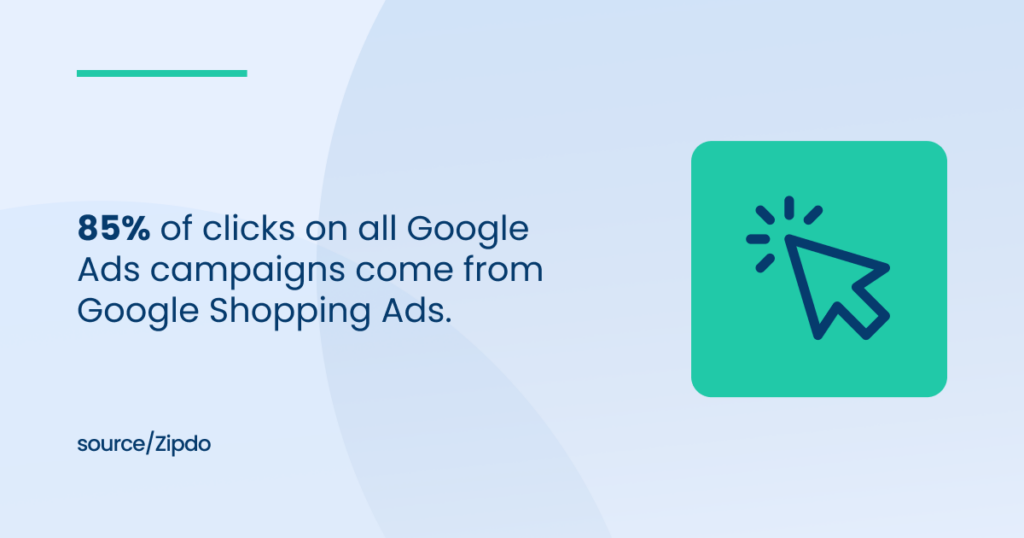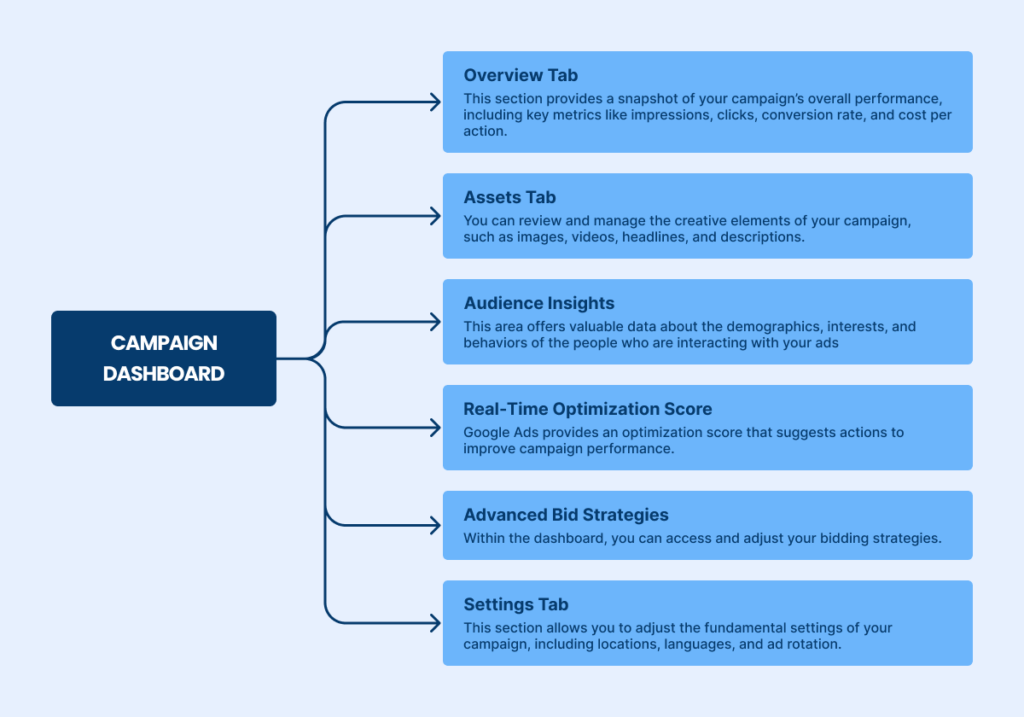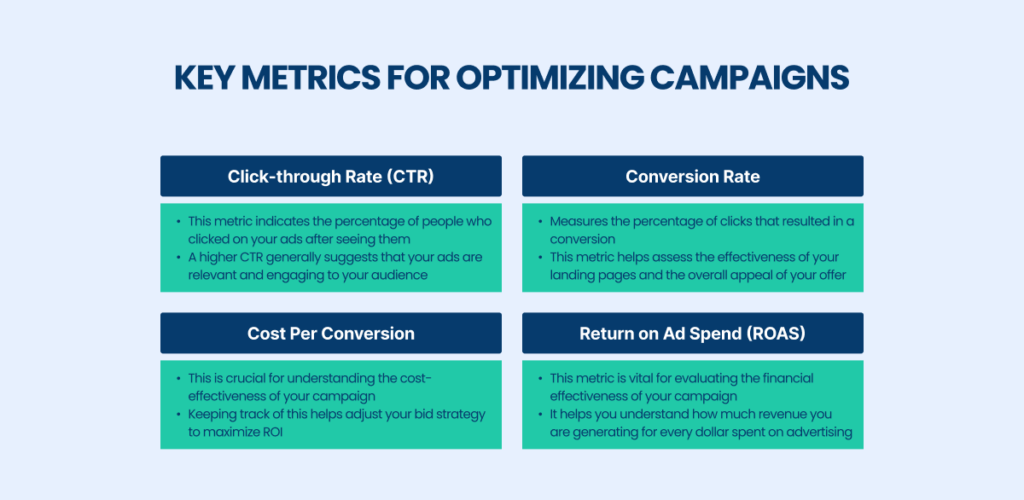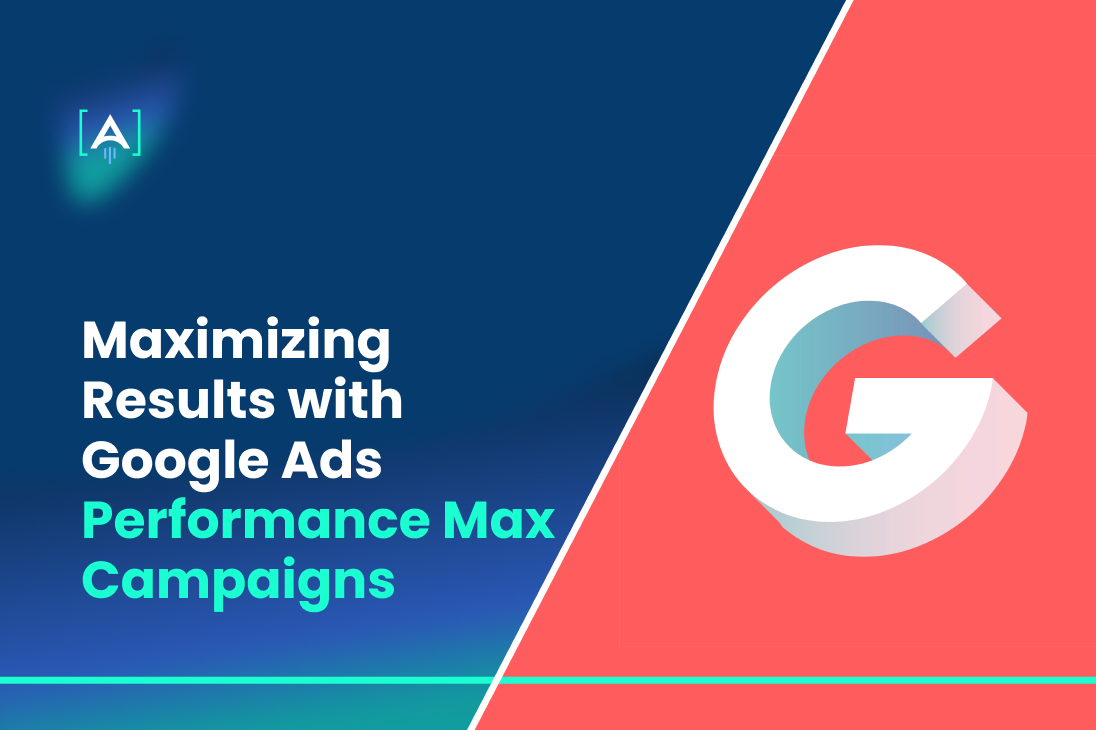Google Ads Performance Max is a powerful tool that has revolutionized how businesses approach digital advertising strategies.
By harnessing the power of artificial intelligence and machine learning, Performance Max campaigns offer the potential to enhance campaign performance and drive substantial returns on investment significantly.
According to Zipdo, approximately 58.5 million sites use Google Ads worldwide.

Navigating the complexities of Performance Max can be challenging.
However, this is where a skilled Google Ads agency can make a significant difference.
In this guide, we will introduce the Performance Max campaigns, explore how to optimize them for maximum results and cover key strategies and actionable insights to help you maximize the innovative platform’s potential.
What are Performance Max Campaigns?
Performance Max Campaigns are the latest offering in Google Ads’ suite of advertising solutions, designed to streamline the ad creation and Google Ads optimization process using Google’s advanced machine learning technology.
This new type of campaign allows advertisers to access all of their Google Ads inventory from a single campaign, aiming to maximize the conversion value across various channels.
Performance Max is built to complement your keyword-based search campaigns, helping you find more customers converting across all of Google’s channels like YouTube, Display, Search, Discover, Gmail, and Maps.
Source: Number of Social Media Users, Statista
The primary goal of a Performance Max Campaign is to drive conversions by automatically finding the best times and places to show your ads across Google’s entire range of advertising channels. This is made possible by leveraging the performance potential of Google’s machine learning technology, which optimizes bids and placements in real-time to maximize the conversion value of each ad.
It’s an ideal solution for marketers looking to boost their online presence efficiently while targeting specific conversion goals such as sales, leads, or offline foot traffic.
Key Features and Capabilities
Performance Max Campaigns integrate cutting-edge features and capabilities that differentiate them from traditional advertising approaches.
One of the most notable features is using Google’s AI to automatically optimize ads across multiple platforms. Instead of manually adjusting campaigns for each channel, Performance Max uses predictive algorithms to distribute your advertising spend where it’s most likely to convert at the right time.
Source: Data Report
Another significant capability is the focus on audience expansion. Performance Max does not require advertisers to specify keywords.
Instead, it uses the advertiser’s goals and uploaded assets to find the best audience for the campaign. This approach harnesses the power of Google’s vast user data. It analyzes patterns and behaviors to target users most likely to respond to your ads, even if they haven’t directly searched for related terms.
How Performance Max Campaigns Work
Performance Max Campaigns represent a significant evolution in how Google Ads are managed and optimized. They leverage the latest advancements in AI and automation to maximize the performance of advertising efforts across Google’s vast network of platforms.
Understanding how these campaigns function can help advertisers optimize their strategies and achieve better results.
The Role of AI and Machine Learning
At the core of Performance Max Campaigns is Google’s sophisticated AI and machine learning technology, which automates numerous aspects of ad management and optimization.
- Automated Bidding and Budget Allocation: AI algorithms dynamically adjust bids across various channels and times, ensuring that your budget is spent in the most efficient manner to maximize conversions.
Google Ads uses past performance data and contextual information to predict future performance and allocate budget accordingly. - Predictive Audience Targeting: Instead of relying solely on user-inputted keywords, Performance Max utilizes machine learning to predict and reach potential customers based on their likelihood to convert. This involves analyzing vast amounts of data, including user behaviors, search histories, and other engagement metrics.
- Optimized Ad Placement and Timing: AI determines the optimal combination of ad placement and timing across Google’s entire ecosystem, including Search, YouTube, Gmail, and the Display Network. This ensures that your ads are shown to the right people at the right time without the need for manual intervention.
- Creative Asset Optimization: Performance Max campaigns automatically test different combinations of provided assets (images, headlines, descriptions) to determine which combinations perform best. This ongoing testing is crucial for refining ad presentations without additional effort from the advertisers.
Understanding the Campaign Dashboard
The Google Ads campaign dashboard for Performance Max provides a comprehensive view of your campaign’s performance and settings.

Understanding how to navigate and utilize the campaign dashboard effectively is crucial for managing Performance Max campaigns. The dashboard not only provides a wealth of data but also simplifies the management of complex, multi-platform advertising campaigns.
By leveraging the automated tools and detailed insights provided, advertisers can significantly enhance their ad performance, leading to better outcomes and more efficient use of advertising budgets.
Check Our Ultimate Google Ads Glossary
Initial Setup and Requirements
Setting up a Google Ads Performance Max campaign involves carefully planning and understanding the platform’s unique capabilities.
From basic account setup to integrating essential components, ensuring everything is correctly configured from the start will lay the foundation for a successful campaign.
Account Setup Basics
Before you can launch a Performance Max campaign, you must complete several foundational steps to prepare your Performance Max Google Ads account. These steps are critical in ensuring that your campaigns run smoothly and are optimized for maximum performance.
- Google Ads Account Creation: If you haven’t already, create a Performance Max Google Ads account. This straightforward process involves visiting the Google Ads website and following the on-screen instructions to set up your account.
- Linking Google Analytics and Google Ads: For deeper insights and data-driven optimization, link your Google Analytics account to your Google Ads account. This integration allows for better tracking of user behaviors, such as page visits and conversions, which are crucial for optimizing Performance Max campaigns.
- Conversion Tracking Setup: Establish conversion tracking by setting up goals in Google Analytics or using the Google Ads conversion tracking tool. This step is essential for Performance Max since the campaign’s AI needs conversion data to optimize bidding strategies and ad placements effectively.
- Billing Information: Ensure your billing information is accurately entered into your Performance Max Google Ads account to prevent any interruptions in your ad campaigns due to billing issues.
- User Access Management: If you are working with a team, configure user access to allow the appropriate levels of control for different team members. This includes assigning admin, standard, or read-only access depending on each member’s role.
Essential Components for Launch
Launching a Performance Max campaign requires more than just a standard setup; it requires careful consideration of several key components that will dictate the effectiveness of your ads. These components are crucial for leveraging the full power of Performance Max’s capabilities.
- Asset Collection: Gather all necessary creative assets, including high-quality images, videos, headlines, and descriptions. Performance Max campaigns use these assets to generate ads across different formats and platforms automatically. The quality and relevance of these assets significantly influence the campaign’s success.
- Target Audience Definition: Although Performance Max campaigns do not require traditional keyword targeting, defining your target audience based on demographics, interests, and behaviors is still crucial. This information helps Google’s AI understand whom your ads should be shown to.
- Budget and Bidding: Decide on a budget for your campaign and select a bidding strategy that aligns with your business goals. Performance Max offers several bidding strategies, such as maximizing conversion value or focusing on a specific return on ad spend (ROAS). Choose the strategy that best suits your objectives.
- Campaign Goals Setting: Clearly define what you aim to achieve with your Performance Max campaign. Goals could include increasing online sales, generating leads, or driving foot traffic to physical stores. These goals will guide the AI in optimizing your campaigns.
- Feed Integration (if applicable): If your campaign will promote products from an inventory, integrate a product feed from your Google Merchant Center. This feed will enable dynamic search and shopping ads within your Performance Max campaign.
- Ad Extensions: Ad extensions enhance your ads with additional information, such as contact details, links to specific parts of your website, or even promotions. Extensions improve the visibility and effectiveness of your ads.
- Google Ads Quality Score Review: Understand the components that affect your Quality Score, such as ad relevance, expected click-through rate, and landing page experience. Higher quality scores can lead to lower costs per click and better ad placements.
- Attribution Model Selection: Choose Performance Max Google Ads Attribution Models that best reflect the customer journey to conversion. Performance Max supports several attribution models, and selecting the right one can influence how conversion credit is assigned across different touchpoints.
By carefully preparing each component, you can ensure that your Performance Max Google Ads campaigns are set up for success.
Proper setup enhances campaign performance and maximizes return on investment by leveraging Google’s advanced machine learning and optimization capabilities.
Creating Effective Ads for Performance Max
Creating effective ads within the Google Ads Performance Max framework involves deeply understanding what makes ad creatives compelling and how to craft strong call-to-actions (CTAs) that drive user engagement and conversions.
Given Performance Max’s unique capabilities to automate and optimize ad placements across Google’s various channels, it’s crucial that advertisers provide high-quality, impactful ad content that resonates with the target audience.
This ensures that the machine learning algorithms have the best raw material, leading to optimized performance and better outcomes.
Designing Compelling Ad Content
Understanding the dynamic and diverse nature of how and where your ads will be displayed is key to designing compelling ad creatives for a new Performance Max campaign.
Since Performance Max leverages multiple platforms, from Search ads to YouTube videos and even Google’s Display Network, each piece of creative content must be versatile, engaging, and tailored to stand out across various formats.
Source: RedLine
Start with high-quality visual elements. Since visual content often serves as the first point of interaction with your audience, it needs to capture attention quickly. Use high-resolution images and professionally rendered videos. The visuals should be directly relevant to the product or service being advertised, showcasing them in a context that the target audience can relate to or aspire to.
Your ads’ messaging should also be clear and aligned with the audience’s needs and expectations. This involves using language that resonates with the target demographic, addressing their pain points, and concisely highlighting the benefits of your offering.
The tone should be consistent with your brand voice but adaptable to the varying formats within the Performance Max Google Ads ecosystem.
Another aspect of designing for Performance Max is using dynamic elements. Since the platform uses dynamic search ads, it’s beneficial to create ads that are flexible in their formatting and content.
This includes using dynamic keyword insertion where appropriate and ensuring that your ads can automatically adjust their size, appearance, and messaging based on the placement and device they are being viewed on.
It’s also crucial to test multiple variations of your ads.
Performance Max campaigns excel at determining which ad variations perform best through continuous testing and learning. Creating multiple versions of your images, headlines, and descriptions gives the AI more options to work with, increasing the likelihood of finding the most effective combinations.
Crafting Strong Call-to-Actions
A strong call-to-action (CTA) is pivotal in converting the initial interest generated by your ad creatives into actionable outcomes. The CTA must be clear, compelling, and directly linked to the stage of the customer journey that the viewer is currently in.
Source: Azaryan Growth Agency
For Performance Max Google Ads, the CTA should be explicitly crafted to encourage immediate response.
Phrases like “Shop Now,” “Learn More,” or “Sign Up Today” are direct and convey a sense of urgency or benefit. The CTA must stand out within the ad, using contrasting colors or bold text to make it visually prominent.
Integrating Google Adwords Tips into your strategy is essential to ensure optimal performance in your Performance Max campaigns.
Familiarizing yourself with best practices can greatly enhance your ad’s effectiveness. For example, refining your ad text to include clear, actionable language and ensuring your ads and keywords are highly relevant to the ad group’s theme can improve your click-through and conversion rates.
Keeping up-to-date with these tips helps fine-tune your campaigns and aligns your efforts with Google’s best ad creation and optimization practices.
Moreover, considering the audience signals and existing customers in your Google Ads bidding strategies can enhance how you frame your CTAs. For instance, if audience data suggests a high familiarity with your product or brand, the CTA could be more assertively sales-driven.
Conversely, the CTA might focus more on providing information and building trust for newer audiences.
Analyzing and Optimizing Campaigns
Effective analysis and ongoing optimization are crucial for driving the success of any Performance Max campaign on Google’s advertising channels.
By closely monitoring key metrics, understanding conversion data, and interpreting engagement metrics, advertisers can refine their strategies and make informed decisions to enhance campaign performance.
Key Metrics to Monitor
Monitoring the right metrics is essential to understand how well your Performance Max campaign is performing and identify areas for improvement.

These metrics provide a comprehensive view of your campaign’s performance and are essential for making data-driven decisions to optimize your advertising efforts.
Understanding Conversion Data
Conversion data is a critical component of any successful Performance Max campaign. This data not only tells you about the number of conversions but also provides deeper insights into the quality and value of those conversions. Here’s how to leverage conversion data effectively:
- Evaluate Conversion Paths: Analyze users’ paths to convert after interacting with your ads. This can reveal insights about user behavior and the effectiveness of different campaign components, such as specific ads or keywords.
- Conversion by Device: Understanding which devices are leading to conversions can inform adjustments to your device targeting and bid adjustments, ensuring you are capitalizing on the most effective platforms.
- Time to Conversion: Analyzing the time it takes for a user to convert after clicking an ad can provide insights into the length of the sales cycle and the effectiveness of your landing pages in converting interest into action quickly.
By analyzing conversion data, you can pinpoint which aspects of your Performance Max campaign are working and which may need tweaking to better drive your audience’s desired actions.
Interpreting Engagement Metrics
Engagement metrics provide insights into how users interact with your ads and content, offering clues about the campaign’s relevance and impact on your target audience. Important engagement metrics include:
- Page Views Per Visit: This metric indicates how engaging and compelling your content is. A higher number of page views per visit suggests that users are interested in exploring more content, reflecting positively on the relevance and quality of your landing pages.
- Average Session Duration is the length of time users spend on your site after clicking an ad. Longer sessions can indicate more engaging content or more detailed decision-making processes.
- Bounce Rate is the percentage of visitors who navigate away from the site after viewing only one page. A high bounce rate might suggest your landing pages are not relevant or compelling enough to keep users engaged.
Understanding these engagement metrics helps assess the quality of user interactions and the effectiveness of your content. It can also better guide improvements in your content and overall campaign strategy to meet your target audience’s needs and interests.
Advertisers can gain valuable insights into their Performance Max campaigns by systematically analyzing these key metrics, understanding conversion data, and interpreting engagement metrics.
This analysis is crucial for making informed decisions that optimize campaign performance, leading to more successful outcomes across Google’s advertising channels.
Partner with [A] Growth Agency for Maximizing Your Google Ads Performance Max Campaigns
Google Ads Performance Max campaigns offer immense potential for businesses seeking to maximize their advertising ROI.
Performance Max can drive significant growth and improve campaign efficiency by harnessing the power of artificial intelligence and a comprehensive suite of Google Ads inventory.
While the platform’s automation is a major advantage, strategic guidance and optimization are crucial for achieving optimal results.
Partnering with [A] Growth Agency can provide the expertise needed to discover Performance Max’s full potential.
The slogan we strictly follow is that Growth is our driving force – but speed and execution are our keys to success.
Our core mission is to scale businesses and implement effective growth strategies. Moreover, we believe in the power of data-driven approaches to transform businesses.
Remember, continuous monitoring, optimization, and experimentation are key to staying ahead in the dynamic digital landscape.

